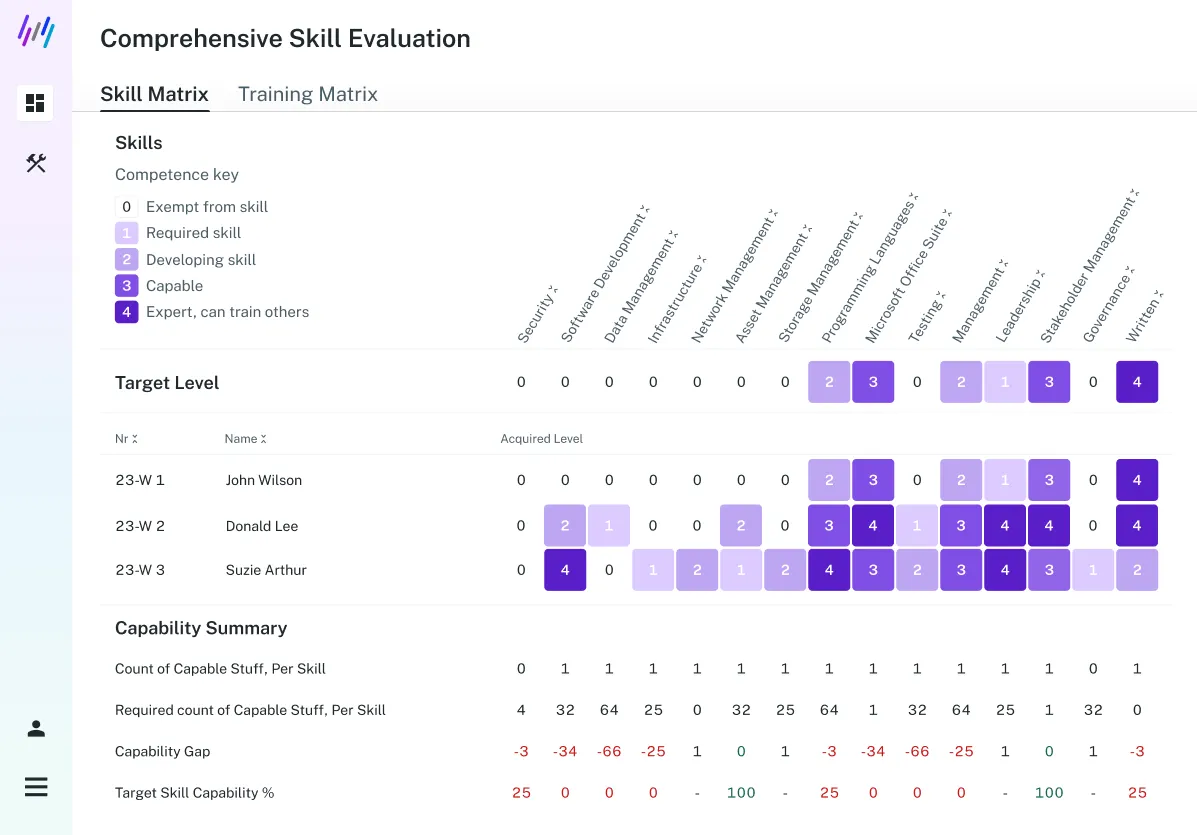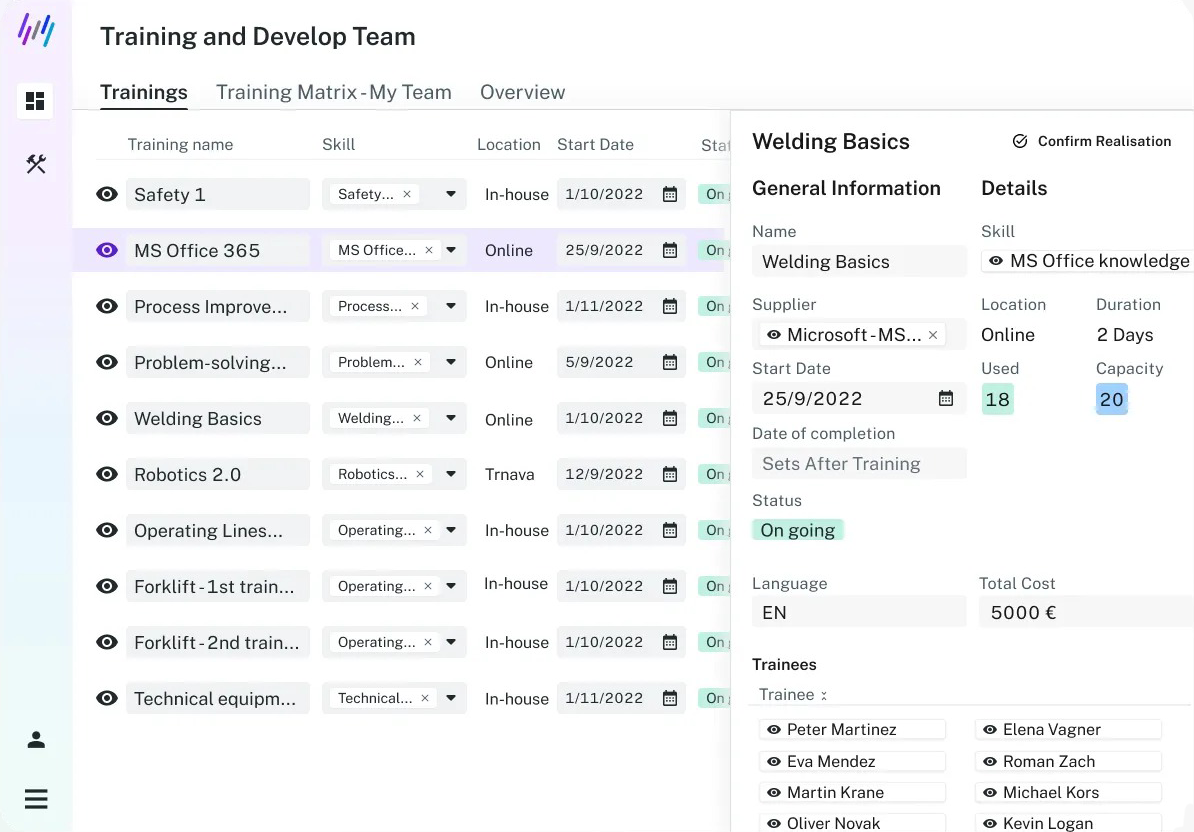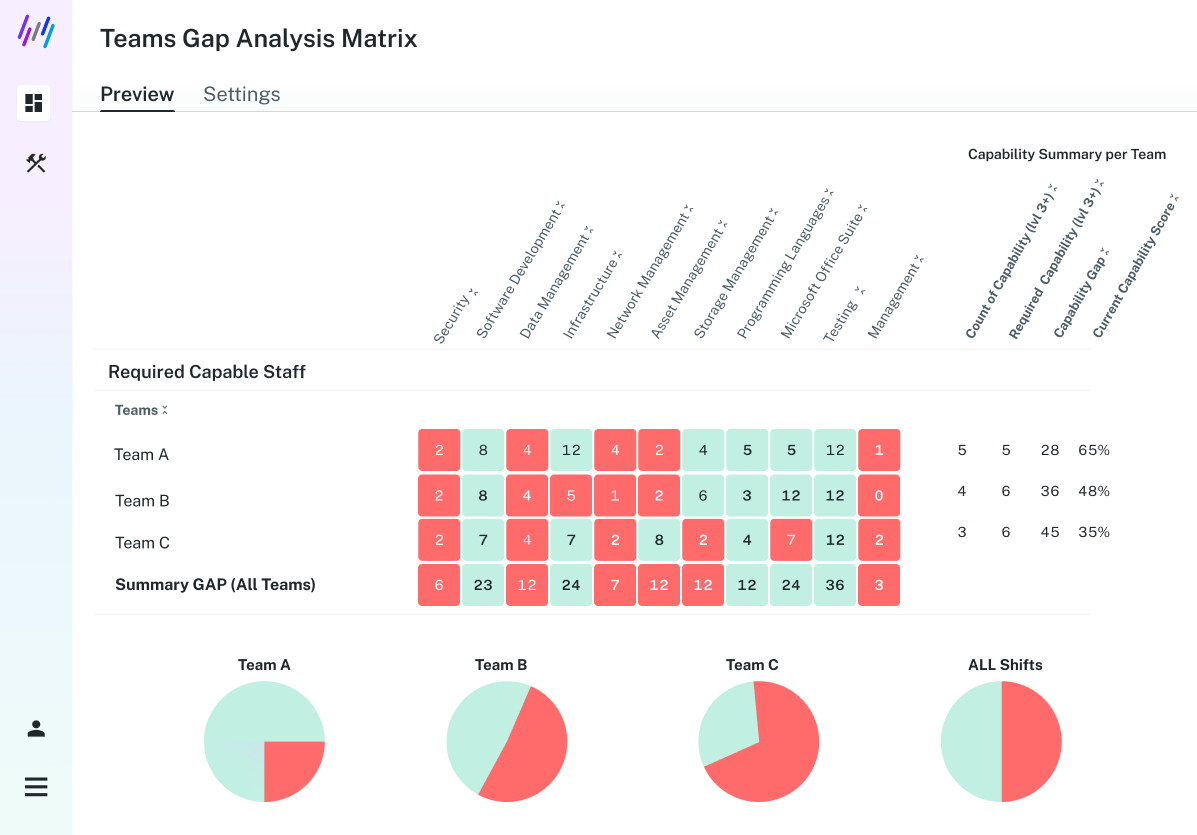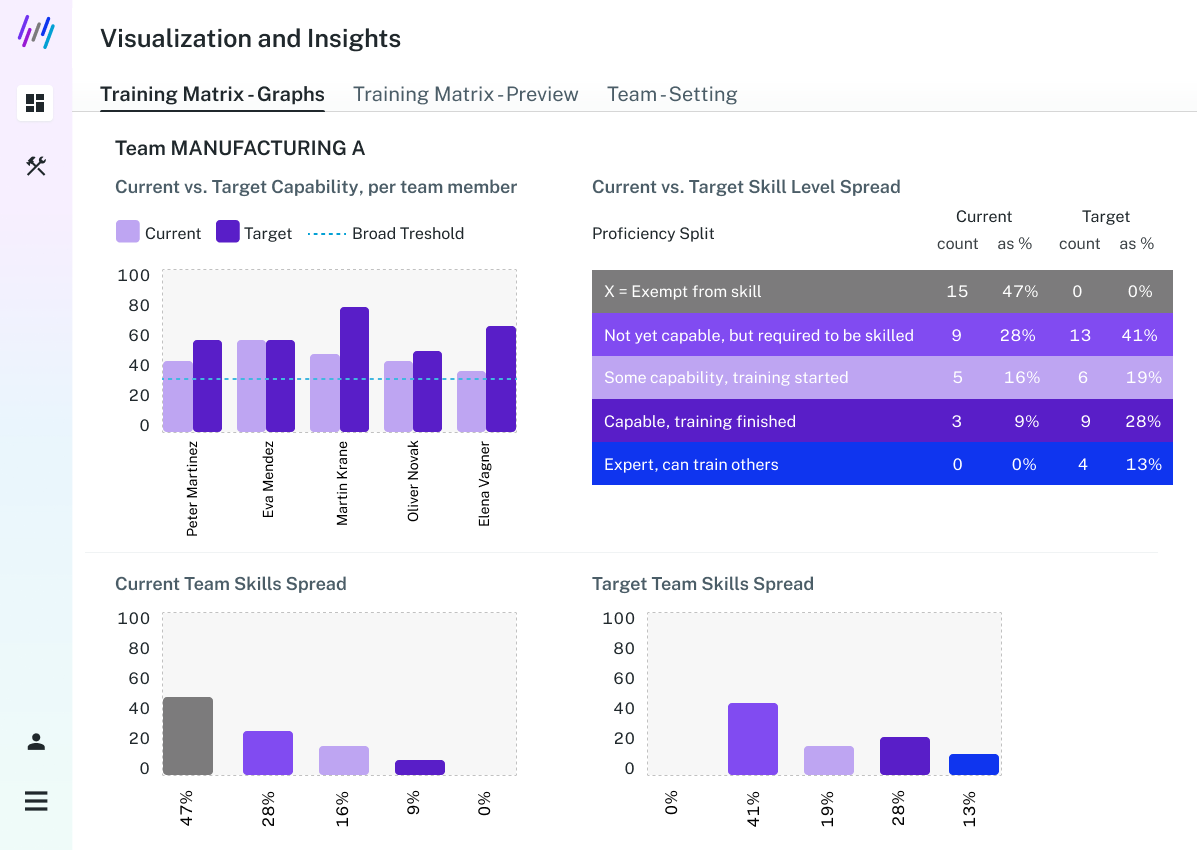By Team SOLVEDIO │ Updated November 26, 2024
Client
Multinational Automobile Manufacturer
Executive Summary
This case study highlights the successful implementation of Solvedio’s Skills Matrix for a leading global luxury car manufacturer. Facing challenges in managing and tracking employee skills manually, the client needed a more efficient solution to keep pace with the rapidly evolving automotive industry. Solvedio's Skills Matrix provided real-time insights into employee capabilities, enabling better workforce allocation, targeted training, and career development. The result was improved operational efficiency, employee satisfaction, and agility in responding to market demands, positioning the company as an industry leader in innovation and talent management.
About
This client is a leading global luxury car manufacturer known for its diverse range of vehicles, from sporty compacts to robust off-road models. In an industry with constant technological advancements, they have consistently set the standard for innovation and quality.
"Adopting Solvedio’s Skills Matrix has been a game-changer for our talent management strategy. It has empowered us to align our workforce with our strategic objectives, significantly enhancing our operational efficiency and innovation capabilities."
The Problem
The automotive industry is rapidly evolving, especially with the push toward electrification and advanced technologies. The client faced a significant challenge: their traditional, manual method of managing and tracking employee skills was inefficient and prone to errors. This outdated system hindered the company’s ability to quickly identify and deploy the right talent, creating a bottleneck that limited its ability to adapt to market changes and innovation opportunities.
The Key Collaboration Milestones
- 1 Initial Assessment - 1/2024
- 2 Implementation of Skills Matrix - 3/2024
- 3 Training & Adoption - 4/2024
- 4 Real-Time Skill Assessment - 6/2024
- 5 Continuous Improvement - since 6/2024
Our Solution
The implementation of Solvedio’s Skills Matrix revolutionized the client’s approach to talent management. The system provided real-time insights into employee skills, allowing for:
+ 25%
more accurate
assessments
+ 30%
increase in targeted
training
+ 15%
improvement in workforce
allocation efficiency
This led to a:
+ 15%
boost in overall
operational efficiency
+ 10%
increase in employee
satisfaction
+ 25%
faster response to market
demands
As a result, the company not only improved its ability to meet current technological challenges but also positioned itself as a leader in the automotive industry.
The solution was built around ten key functional elements:
1. Accurate Skill Assessment
- Comprehensive analysis of each employee's skills, strengths, and areas for improvement.
- Real-time visibility into individual skill levels, enabling precise workforce evaluations.

2. Identification of Training Needs
- Systematic identification of skill gaps across the workforce.
- Tailored training programs to address emerging technological requirements and industry trends.

3. Enhanced Workforce Allocation
- Optimized task assignments based on employee capabilities.
- Improved alignment of workforce skills with project needs, boosting overall efficiency.
4. Career Development Facilitation
- Clear mapping of potential career paths for employees.
- Identification of skills required for advancement, encouraging continuous professional growth.
5. Improved Resource Planning
- Strategic planning support through insights into workforce capabilities.
- Data-driven decisions on future projects and hiring needs based on skill availability.

6. Promotion of a Learning Culture
- Encouragement of continuous learning and upskilling within the organization.
- Fostering an environment that values knowledge enhancement and personal development.
7. Enhanced Team Collaboration
- Effective team formation based on complementary skills.
- Improved project outcomes through better collaboration and synergy among team members.
8. Succession Planning Support
- Identification and preparation of potential leaders for future roles.
- Ensuring a robust leadership pipeline aligned with the company’s long-term goals.
9. Flexibility in Workforce Management
- Swift adaptation to changes in project requirements and technology trends.
- Dynamic workforce management enables rapid response to market shifts.
10. Streamlined Performance Reviews
- Objective evaluation of employees focusing on skill proficiency and development.
- Transparent and fair performance reviews lead to better employee satisfaction and retention.

